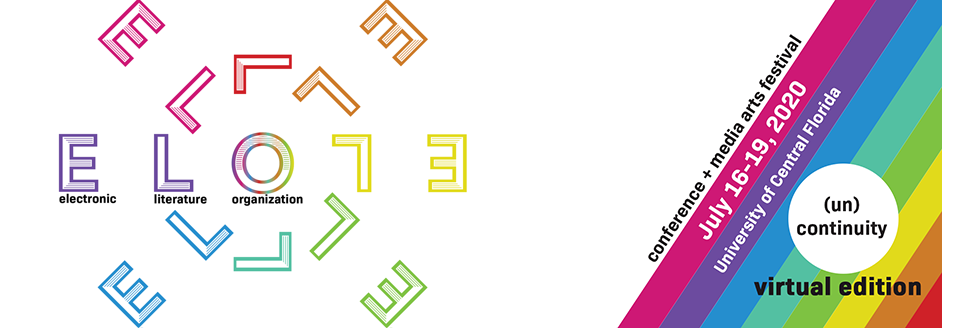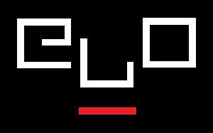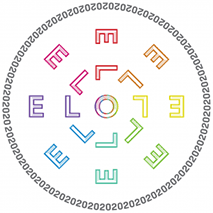Proposal Title
Loading...
Submission Type
Conference Proceedings Paper
Abstract
This contribution falls within the domain of children’s and young adults’ digital literature and, in particular, in that segment of the field aimed at exploring both the potential and the limits of reading digital literary works at school. In order to describe the actual reception process (and eventually to accompany the formal introduction of e-lit creations in the French literature school programs), a selection of literary apps was presented to eight groups of young readers, across different school levels: two adaptations of contemporary picturebooks were read in four primary school classes (I can’t wait [France Télévision, 2013] and With a few bricks [Dieudonne, 2014]), while an interactive literary narrative experience (Loss of grasp [Bouchardon, 2016]) and a scrolling graphic novel (Phallaina [France Télévision, 2016]) were respectively analyzed in two middle and high-schools groups. If those experiences lead to describe how young readers handle the narrative interface and manage to combine the multimodal materials composing the message to build their comprehension, they couldn’t clarify how non-linear reading paths and discontinuous narrative flows may be perceived and analyzed in a school reading situation. We thus involved a sample of 32 high-school students in the reading of Bury me, me love [Plug In Digital, 2017], a non-linear fictional creation(inspired from a true story) partially determined by the literary device, that offers different issues according to the readers’ choices.Defined as a "game of reality", the story follows the vicissitudes of Nour, a young Syrian woman who tries to flee her country, and appears as a conversation via a messaging app between the protagonist and his companion, who is embodied by the reader him/herself. By following the flow of the exchanges, the story progresses, and the journey of the protagonist is at the same established and addressed towards one of its 19 possible endings. The time of the narration also depends on the reader, who can either respect the rhythm of the conversation, intended to reproduce the actual chronology of the journey, or accelerate the narration in order to read the sequence of sms in a continuous flow. In both cases, each choice is irreversible and has unexpected consequences on the narrative. A double discontinuity in the reading is thus installed: one concerns the narrative, whose deployment may abruptly deviate from its most likely issue; the other concerns the reading itself, quickly but systematically interrupted by the necessity of selecting a crucial preference among a limited set of options. In this context, it is worth observing if the role of the device, the programmed choices and the discontinuity of the narrative plot are effectively considered as part of the literary construction. In order to answers to those questions, we will analyze the verbal exchanges held by the students during thethree-week reading sessions, the reading diaries written during the experience and the 50 answers they submitted in the final questionnaire. The interpretation of the data will lay out different positions and, globally, a certain resistance at accepting a renewed reading role.
Literary apps
With a few bricks,Dieudonne, 2014.
Loss of grasp, Bouchardon, 2016.
I can’t wait, France Télévision, 2013.
Phallaina, France Télévision, 2016.
Bury me, me love, Plug In Digital, 2017.
Bury me, my love: (non)choosing reading paths
This contribution falls within the domain of children’s and young adults’ digital literature and, in particular, in that segment of the field aimed at exploring both the potential and the limits of reading digital literary works at school. In order to describe the actual reception process (and eventually to accompany the formal introduction of e-lit creations in the French literature school programs), a selection of literary apps was presented to eight groups of young readers, across different school levels: two adaptations of contemporary picturebooks were read in four primary school classes (I can’t wait [France Télévision, 2013] and With a few bricks [Dieudonne, 2014]), while an interactive literary narrative experience (Loss of grasp [Bouchardon, 2016]) and a scrolling graphic novel (Phallaina [France Télévision, 2016]) were respectively analyzed in two middle and high-schools groups. If those experiences lead to describe how young readers handle the narrative interface and manage to combine the multimodal materials composing the message to build their comprehension, they couldn’t clarify how non-linear reading paths and discontinuous narrative flows may be perceived and analyzed in a school reading situation. We thus involved a sample of 32 high-school students in the reading of Bury me, me love [Plug In Digital, 2017], a non-linear fictional creation(inspired from a true story) partially determined by the literary device, that offers different issues according to the readers’ choices.Defined as a "game of reality", the story follows the vicissitudes of Nour, a young Syrian woman who tries to flee her country, and appears as a conversation via a messaging app between the protagonist and his companion, who is embodied by the reader him/herself. By following the flow of the exchanges, the story progresses, and the journey of the protagonist is at the same established and addressed towards one of its 19 possible endings. The time of the narration also depends on the reader, who can either respect the rhythm of the conversation, intended to reproduce the actual chronology of the journey, or accelerate the narration in order to read the sequence of sms in a continuous flow. In both cases, each choice is irreversible and has unexpected consequences on the narrative. A double discontinuity in the reading is thus installed: one concerns the narrative, whose deployment may abruptly deviate from its most likely issue; the other concerns the reading itself, quickly but systematically interrupted by the necessity of selecting a crucial preference among a limited set of options. In this context, it is worth observing if the role of the device, the programmed choices and the discontinuity of the narrative plot are effectively considered as part of the literary construction. In order to answers to those questions, we will analyze the verbal exchanges held by the students during thethree-week reading sessions, the reading diaries written during the experience and the 50 answers they submitted in the final questionnaire. The interpretation of the data will lay out different positions and, globally, a certain resistance at accepting a renewed reading role.
Literary apps
With a few bricks,Dieudonne, 2014.
Loss of grasp, Bouchardon, 2016.
I can’t wait, France Télévision, 2013.
Phallaina, France Télévision, 2016.
Bury me, me love, Plug In Digital, 2017.




Bio
Eleonora Acerra has a PhD in Literature and Education, obtained at the University of Paul Valéry - Montpellier III (France). Her main reseach interest concerns children's digital literature, e-literary education and multimodality. Her doctoral project was part of the LiNum projet, which was aimed at developing educational contents for studying digital literature at the primary school. She currently is a post-doctoral researcher at the Université du Québec à Montréal.